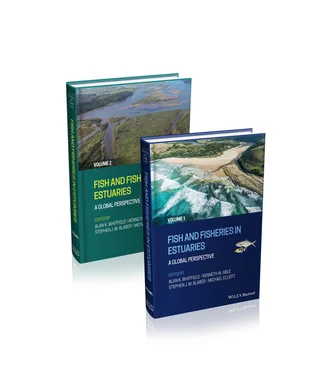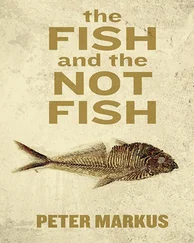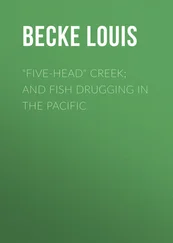In many estuaries, the dominant group of spawners are oviparous MEO/MED which breed at sea, followed by an onshore migration of postflexion larvae and early juveniles (Wallace & van der Elst 1975, Boehlert & Mundy 1988, Able & Fahay 2010). Most of this group are serial spawners that release large numbers of pelagic eggs, which are fertilised within the water column during mass spawning aggregations (Wallace 1975). It is becoming obvious that a number of species that spawn at sea, such as the anguillid eels, are capable of swimming across the continental shelf into estuaries (Wuenschel & Able 2008). However, the immigration of larvae and postlarvae into large, well‐flushed estuaries of the northern hemisphere takes place mainly by using passive and/or selective tidal stream transport (STST) for entry to and retention within these systems (Weinstein et al. 1980, Fortier & Leggett 1982). For example, the pelagic spawner Platichthys flesus spawns on the coast, which is followed by STST that enables the larvae and early juveniles to migrate into their estuarine nursery area. A similar pattern is evident for Paralichthys dentatus in estuaries along the east coast of the North America (Keefe & Able 1993, Hare et al. 2005). Even in the microtidal estuaries of South Africa, southern Australia and New Zealand, where the two‐layered circulation pattern is less pronounced or absent during much of the year, the larvae and juveniles of some marine species enter these systems on the flood tide and are retained by rapidly settling along the banks or on the bottom where water movements are reduced (Beckley 1985, Roper 1986, Neira & Potter 1994).
As indicated in Table 2.4and Houde et al. (2022), several reproductive strategies ensure that eggs and young are retained within an estuary. For example, egg and brood protection by mouth, pouches or nest building, or by attaching eggs to the substratum or weed, prevents washout and the loss of these vulnerable life stages to the marine environment. Similarly, the production of large, demersal and neutrally buoyant eggs by species such as Osmerus eperlanus also leads to a greater retention within transitional waters. By attaching eggs to some element of the substratum, such as debris, rock, sand, shell or vegetation, washout is prevented or reduced, but this does mean that these fertilised eggs are exposed to the highly variable conditions within an estuary.
Species may also time their reproduction to facilitate the retention of eggs and larvae within the estuary. For example, estuarine‐resident species in south‐western Australia typically spawn during the late spring to early autumn period (Potter & Hyndes, 1999), when rainfall in this Mediterranean climate is very limited and thus freshwater discharge very small. This, combined with the small tidal range (<1 m), creates a stable physio‐chemical environment of relatively high salinities and temperatures where progeny are retained and can grow rapidly (Potter et al. 2015b).
While egg and larval retention strategies may be employed by some species, others such as certain blennies and gobies may release larvae into the water column at peak high tide, which are then flushed out to sea by the ebb‐tide (Whitfield 1989). A different strategy is adopted by those marine migrants that use estuaries as juvenile nursery areas; their eggs are often released in coastal waters, or in the vicinity of estuary mouths, thereby reducing the distance between the larval and juvenile habitats to a minimum (Wallace 1975).
2.5 Do functional groups drive fish assemblage structure?
The above functional group approach shows that, despite the estuarine continuum (i.e. the gradual change in environmental variables such as salinity, water temperature, depth, turbidity, dissolved oxygen and substratum type), it is still possible to group species into categories, each with similar life‐history characteristics, trophic demands on the available resources or modes of reproduction. There are ontogenetic shifts in all estuary‐associated fish taxa, with the guilds changing during their lifespan, especially with respect to feeding.
While taxonomic comparisons between fish assemblages give important information, this is regarded as less important for understanding the functioning of estuaries, especially where different biogeographic regions are being studied or compared. As an example, hyperbenthic invertebrate feeders appear to be more prevalent in northern temperate estuaries, especially in the upper regions of these systems where the common juvenile fishes are consuming mainly mysids and shrimps (Mees & Jones 1997). Similarly, shrimps, mysids and swimming prawns are the dominant prey in the diet of several predatory fish species in the Scheldt Estuary. In contrast, there seem to be no bottom dwelling fish species in southern African estuaries that are exclusively hyperbenthophagic feeders. There are many species that feed on both benthic and hyperbenthic invertebrates (Blaber 1984, Marais 1984, Whitfield 1988), but none that fit neatly into the latter category only.
Using the FMFG classification outlined in this chapter, species that utilise similar food resources can be aggregated, thus providing a greater understanding of fish assemblage structure and trophic functioning in different estuaries. It also lays the foundations for examining the similarities and differences between estuarine fish assemblages in different parts of the world, which may share few or no species in common.
The review by Elliott et al. (2007) pointed to differences between the fish assemblage in different biogeographic areas that are worthy of further study. For example, the limited number of true estuarine residents in southern African estuaries (Whitfield 2019) and much higher proportion completing their life cycle in estuaries in Western Australia (Tweedley et al. 2016) are worthy of further scientific study. In terms of number of individuals, these species collectively make a substantial contribution to the ichthyofauna of many estuaries in southern Africa (Harrison 2005) and particularly so in south‐western Australia, where estuarine‐resident species can represent 93–99% of all fish (Hoeksema et al. 2009).
There is an indication that fish assemblages in adjacent marine systems in particular, and possibly freshwater habitats in certain regions, have a strong influence on the structure and diversity of estuarine communities (Albaret 1999). The repercussions of these links and origins for speciation within estuaries have not been well studied. Although estuaries in their current form are globally of recent origin, there are clear genetic differences between the marine and estuarine populations of certain species, e.g. Cnidoglanis macrocephalus (Watts & Johnson 2004). This also raises the question of the extent to which the speciation of fish can occur in estuarine environments, thereby enhancing the diversity of species within these systems. Unfortunately, the available evidence suggests that fish speciation in estuaries is relatively low (Whitfield 1994), especially when compared to marine and freshwater environments.
2.6 Fish functional groups and guild analyses
Functional groups and guilds have much in common and many authors have used the two terms more or less synonymously. However, according to Blondel (2003), processes or functions tend to be a functional group attribute whereas relationships between groups of species fall under the guild approach. Unfortunately, most ichthyologists have not distinguished clearly between functional groups and guilds in the literature, and thus we have accepted that these two terms are interchangeable for the purposes of this review. This synonymous use is epitomised by the term functional guild used by Franco et al. (2008a) below.
Читать дальше












